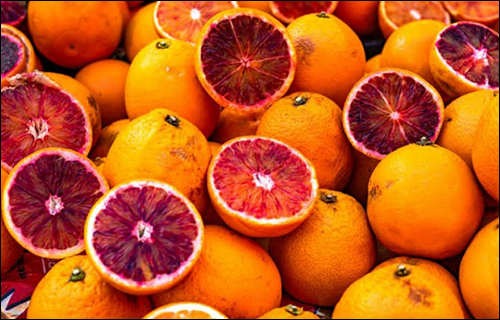A blockchain system is being used to ensure the authenticity of Sicilian oranges as part of a campaign against counterfeit citrus fruits. The Red Orange Upgrading Green Economy (ROUGE) project was initiated by the Sicilian Red Oranges Protection Consortium and technology company Almaviva. A Near Field Communication (NFC) sticker is attached to a blockchain device that is then attached to boxes of Sicilian oranges. Users can thus access product information, including source, harvest date and storage methods, via an app.
Almaviva had previously tested the technology to track products along the wine production chain. Now the idea will be applied to the 2019–2020 blood orange crop. “With a sticker attached to fruit boxes and sophisticated sensors that check transport conditions such as humidity and temperature,” says Fulvio Conti, Almaviva’s head of agriculture and environment, “the app allows users to monitor the production field through the geolocation system, publicly available maps, the date of collection and the storage and distribution methods used. “
Italy produces 1.62 million tons of red oranges annually, but the fruit is subject to forgery, which causes damage to Sicilian producers. In a recent seizure of counterfeit agricultural products, it was found that red oranges from South Africa were being marketed as Sicilian oranges. “These oranges are a jewel in the crown of ‘Made in Italy’ products,” explains Giovanni Selvaggi, the president of the Sicilian Red Oranges Protection Consortium. “More than 50 percent of total national production comes from Sicily. In 2018, the number reached approximately 1 million tons. “
The consortium has more than 600 members, producers and packers, using more than 6,500 hectares of certified cultivation. Three varieties of orange of this type are covered by the status of “under protection”: Moro, Tarocco and Sanguinello. In addition to being consumed fresh, they are increasingly transformed into juices, jellies, sweets and other products. The consortium reports that a growing number of food companies are requesting the use of its name, making the rating highly valued.
“Counterfeiting and fraud are harmful to the consumer and cause damage to producers,” Selvaggi says. “The platform was created to protect Sicilian red oranges and the global export of this unique product, which this year also hit the Chinese market.” In 2019, the first shipment of 46 tons of Sicilian oranges was shipped to China.


